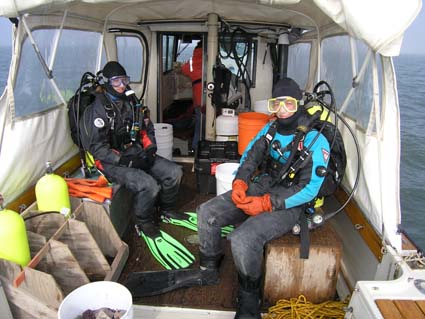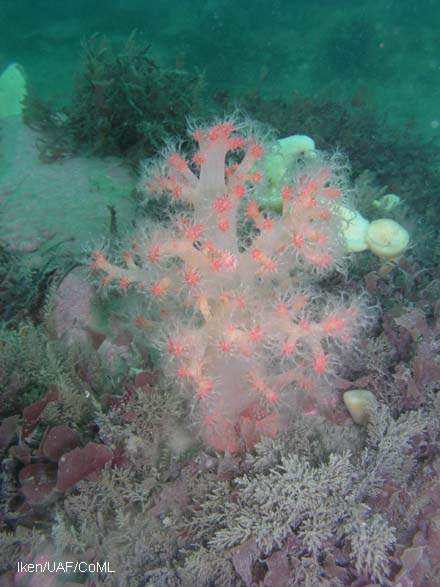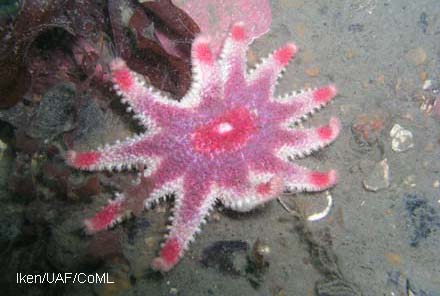Title: Epibenthic biodiversity in Arctic nearshore boulder communities
 |
Principal Investigator |
Project goals
The purpose of this proposal was the taxonomic identification of epilithic community samples from two locations (Boulder Patch and Camden Bay) in the Beaufort Sea that were available from 2003 – 2005 collections.
Results
In both regions, boulders are covered primarily with macroalgae. Among these, the red algae Phycodrys rubens, Phyllophora truncata, Dilsea integra dominated in biomass. Brown algae (kelp) are characterized in the Boulder Patch primarily by Laminaria solidungula, while in Camden Bay L. saccharina is more prevalent. Despite high variability between sites and replicates, invertebrates in Camden Bay were clearly dominated by gastropods (676.3±796.4) and bivalves (642.1±1036.6) in terms of abundance (mean ind m-2 ±SD). Within the gastropods, the single-most abundant species was Boreocingula martyni and within the bivalves it was Musculus discors. Other abundant invertebrate taxa included amphipods (158.9±173.5) and polychaetes (90.7±182.6). In the Boulder Patch, bivalves (181.3±432.6; nearly exclusively Musculus discors) and polychaetes (41.6±69.7) were most abundant in 2003, while in 2004 only very few bivalves (3.2±6.6) were encountered and polychaetes (50.1±97.7) presented the single-most abundant taxon. Overall, taxon composition was similar between the two regions. This was particularly true for the macroalgal community. While overall dominance of bivalves and polychaetes was similar between regions, the high abundance of gastropods in Camden Bay was not found in the Boulder Patch. This was due to very high abundances of one gastropod species, Boreocingula martyni, which is not found in the Boulder Patch. Boreocingula martyni is from the Bering Sea. This would suggest dispersal from Bering Sea with the Pacific water inflow into the Arctic through the Bering Strait and then with the prevailing eastward alongshore current in the Beaufort Sea. It does not explain, however, why this species has not (rarely) been found in the Boulder Patch, which is located between the type location and Camden Bay. Possible explanations could be that 1. environmental conditions in the Boulder patch are not suitable for this species (e.g. low salinity from Sag river outflow), 2. this is a result of patchy recruitment events, or that 3. despite its type locality, this species is more widely distributed in the eastern Arctic (e.g. Canadian Archipelago) or Atlantic Ocean and distribution occurs westwards and does not reach the Boulder Patch in significant amounts.




